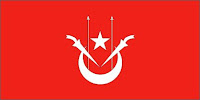Sun, 02 Dec 2007 16:14:02
By Ismail Salami, Press TV, Tehran
 |
Set against the backdrop of thirty years of tumultuous Afghan history, Hosseini seeks to lay bare the innermost repressed human aspirations and a lingering desire for justice in a land crushed to the very bone by internal and external elements.
'A Thousand Splendid Suns' is the story of Mariam and Laila, the two wives of the savage Rasheed. Mariam is only fifteen when she is forced into marriage with Rasheed, who is dozens of years her senior. Two decades later when she cannot produce an heir to Rasheed, he marries fourteen-year-old Laila.
Mariam and Laila join hands to fight the tyrannical rule of a selfish husband. They share their joys and sorrows and brook the tyranny in the deep bond which takes shape between them. With the coming of Taliban to power misery comes after misery: starvation, brutality and fear beyond human imagination. In the end through love the characters triumph over misery and plight.
With inconceivable skill the writer wrings from the readers the utmost strain of pity and sympathy for the characters.
Like in his previous novel 'The Kite Runner', the characters are desperate creatures raped, beaten and stripped of happiness. Yet, they persevere in the path of life looking for a ray of hope in a brutal world created not only by the social conventions and traditions but by the blind ignorance and prejudice of the tyrants as well.
The interplay of love and hate constitutes the core theme of the novel. People fall into two categories, those who are capable of love and those who are incapable of it. Mariam the protagonist looks for love in a society where love is the privilege of a few. Even paternal love is denied her because she is the illegitimate child of a rich man who brought her to life in a moment of carnal whim. In other words, happiness is far beyond the reach of the protagonist.
Apart from the political overtones in the novel, the writer does not lend a political hue to the novel but views human life from a social viewpoint. He depicts Afghanistan in different historical junctures.
Laila is the alter ego of Mariam who suffers a similar destiny although she comes from an intellectual family. In fact, Hosseini shows the predicament of women in a traditional society who have no other duties than wifely ones. It does not matter who you are in the Afghan society but what sex you are. To be a woman is to be a misfortunate creature. To be a woman is a sin.
Under the Taliban the situation becomes even worse for women. The Taliban in fact symbolize the most deteriorated form of existence for women.
As a matter of fact, the regime change does not bring about any reform in the lifestyle of women. Something is rotten in the very beliefs and traditions of the society which bind women to a wheel of woes: hunger, drought, civil war and the cruelty of well-armed zealots.
Hosseini is a great story teller. He has a great power of description and profound insight into human conditions. The characters are described in an unforgettable way. Some provoke anger and the others tenderness and affection. The agony of the Afghan people is painted so vividly that one finds oneself part of their suffering.



















No comments:
Post a Comment